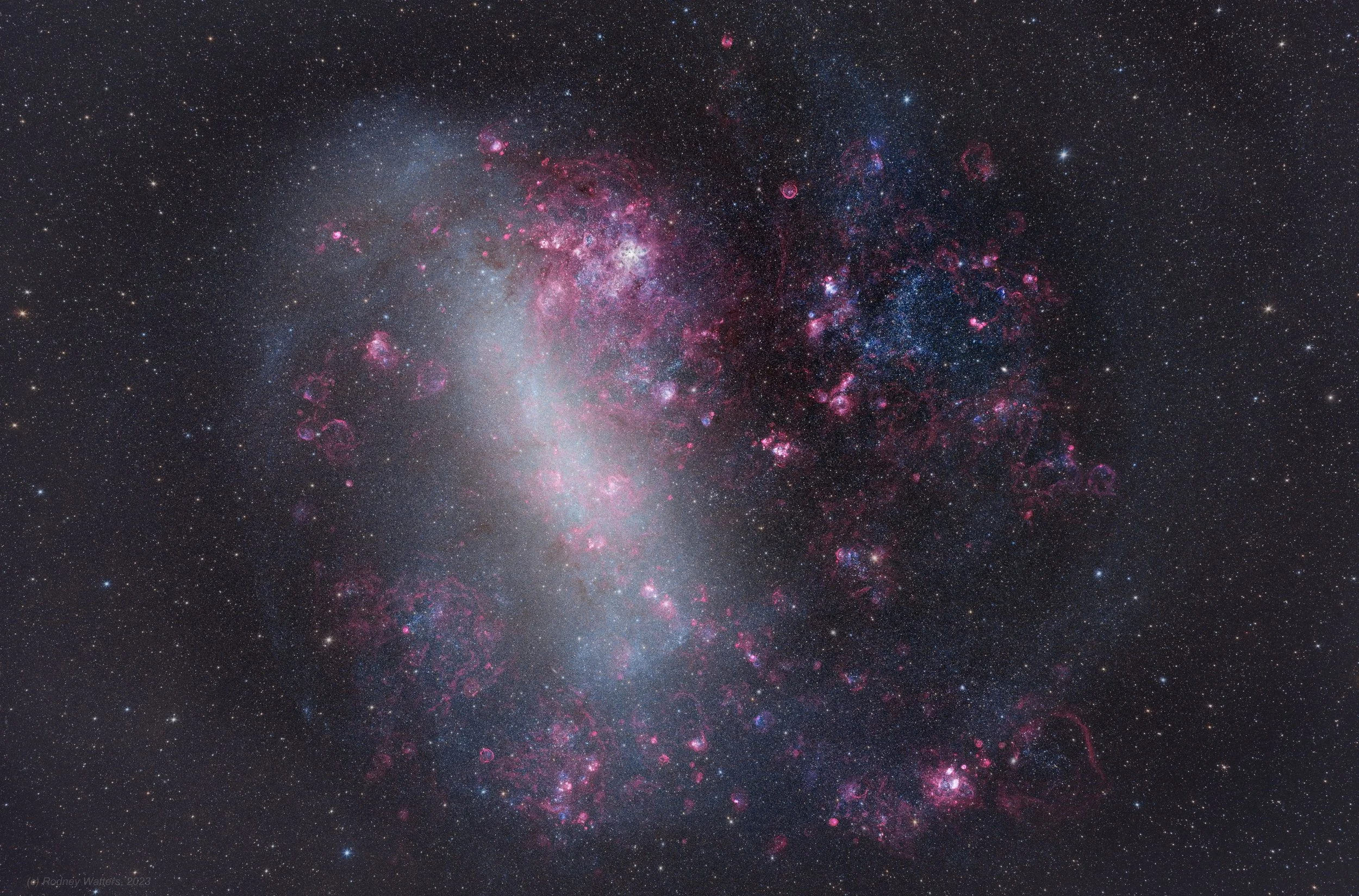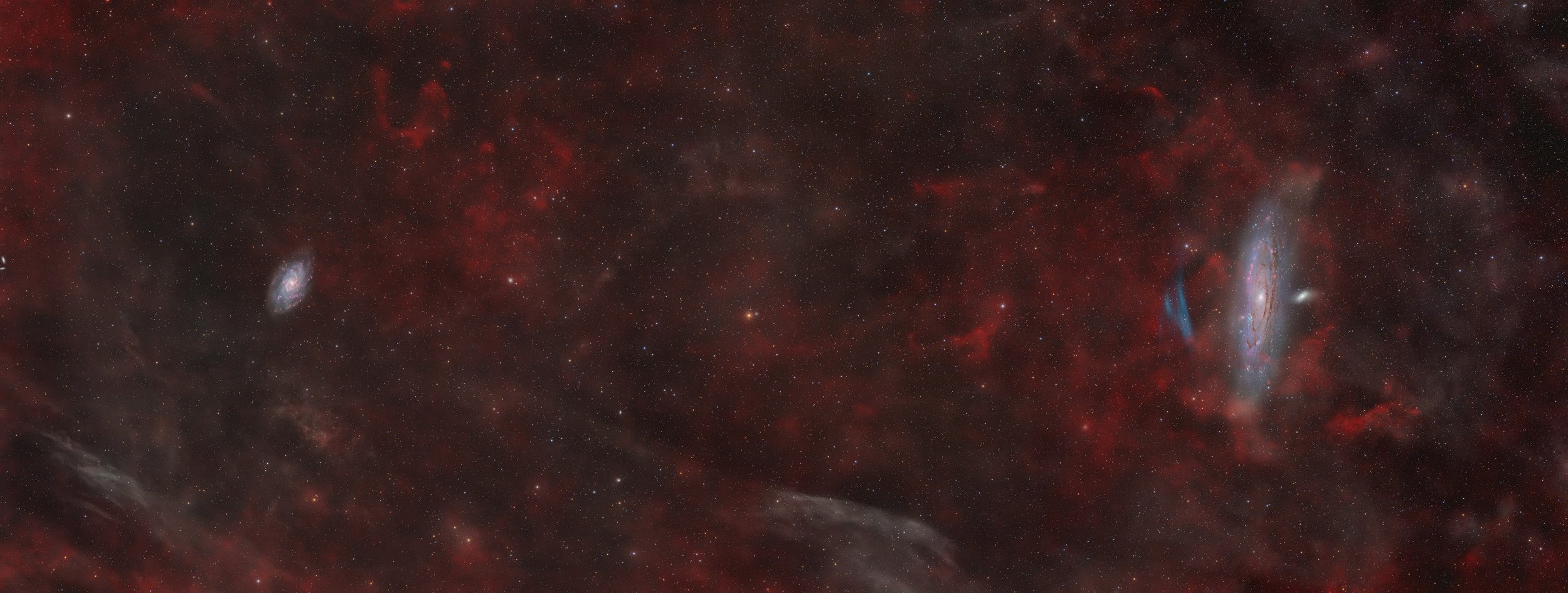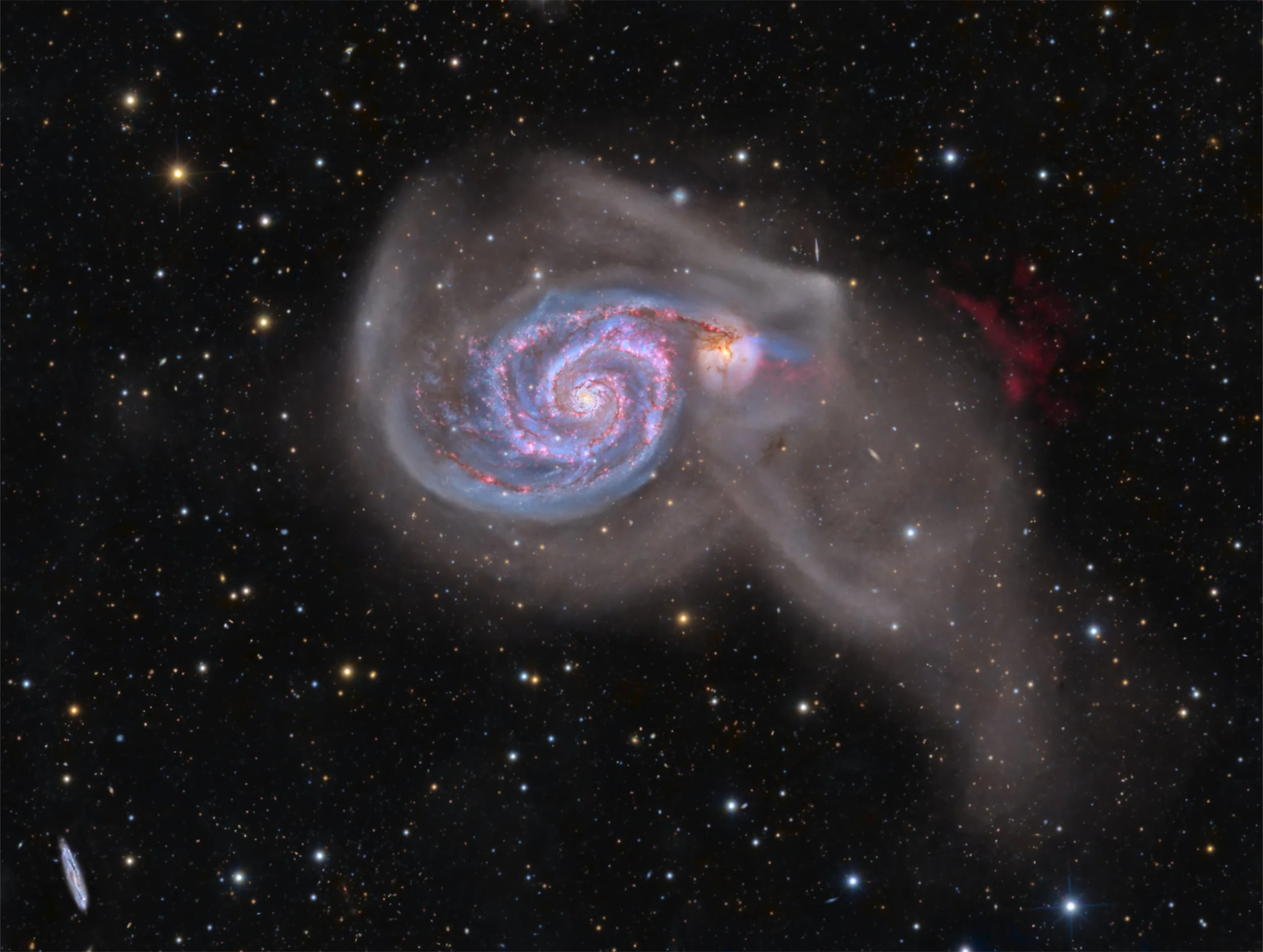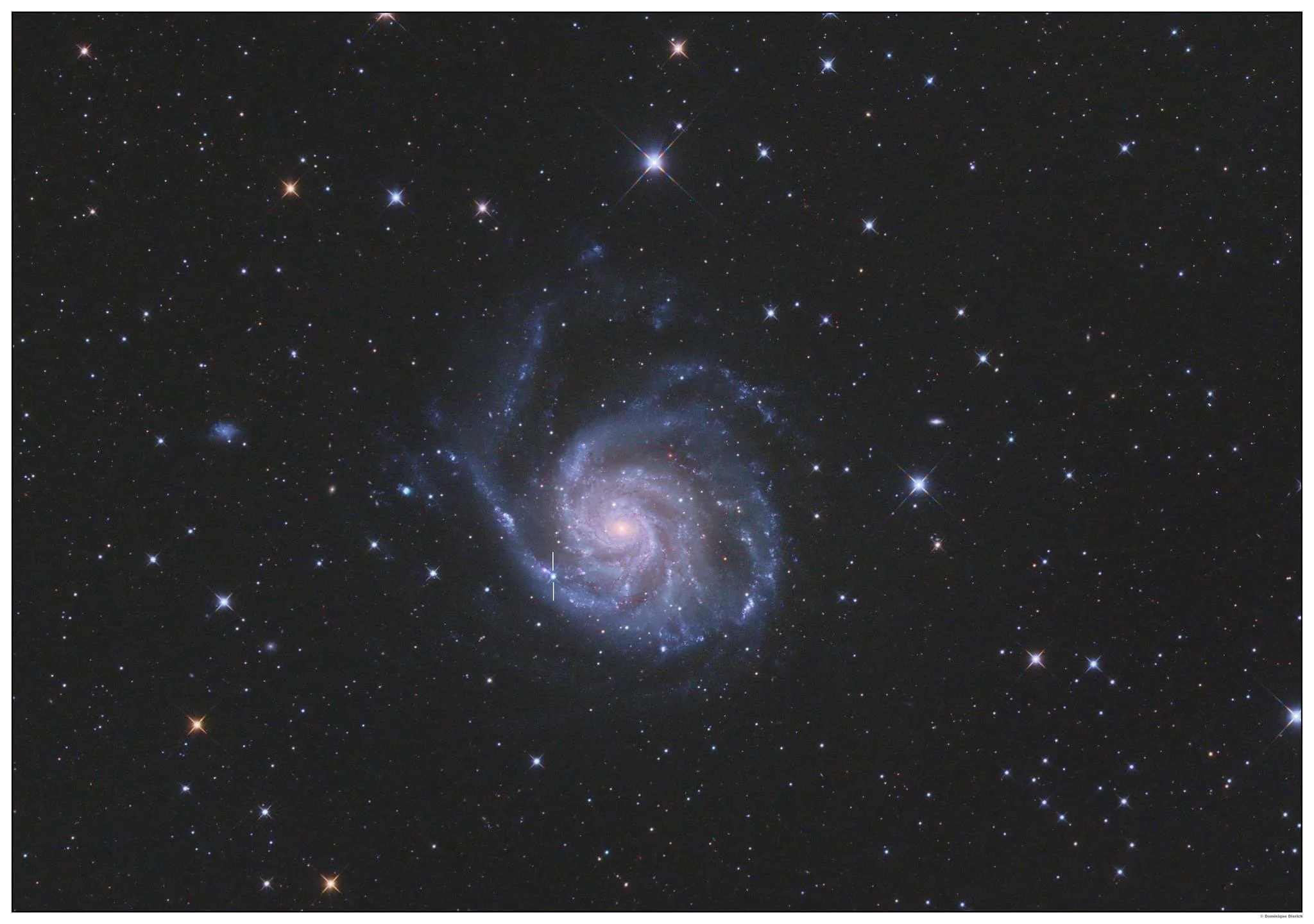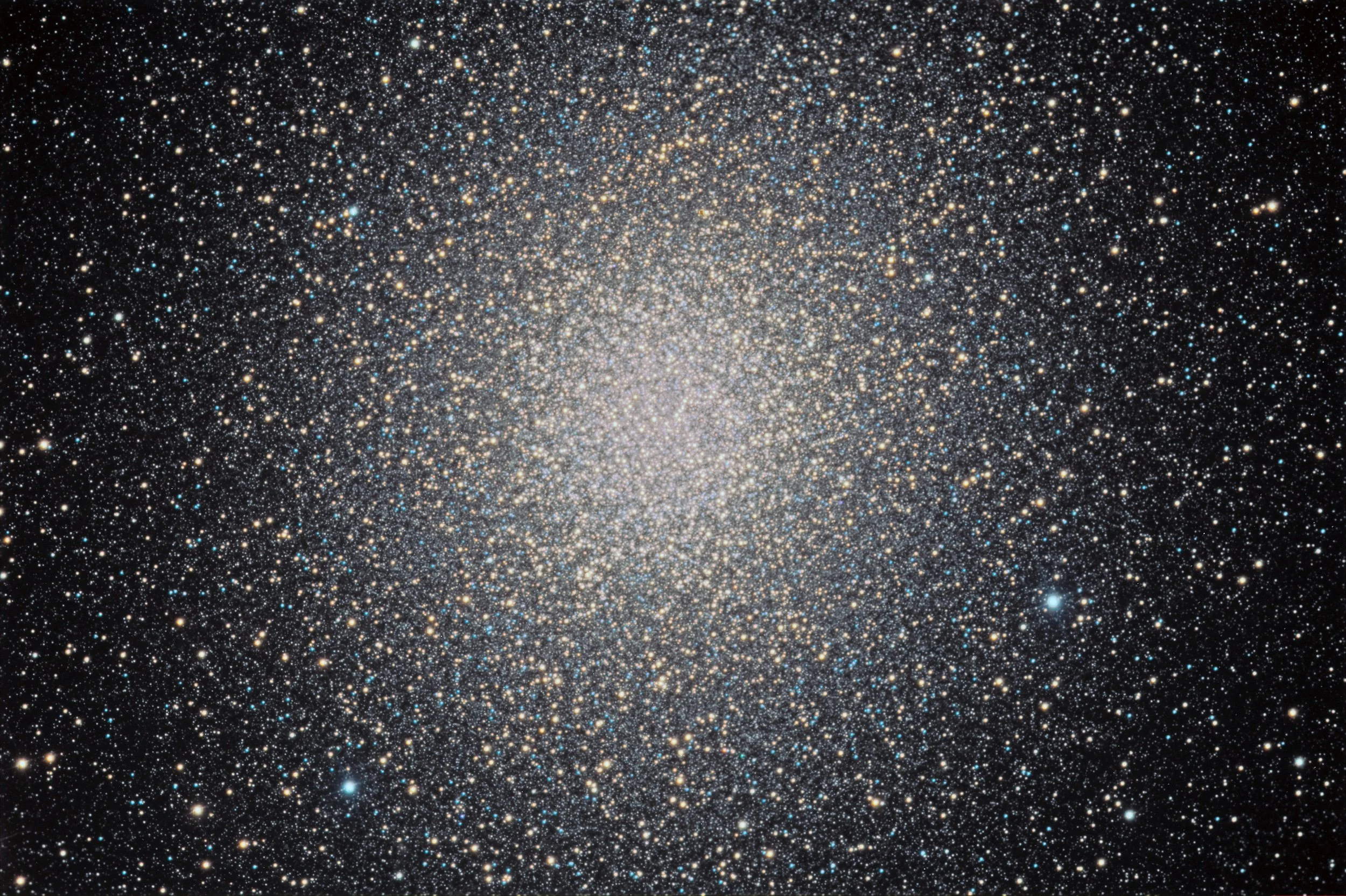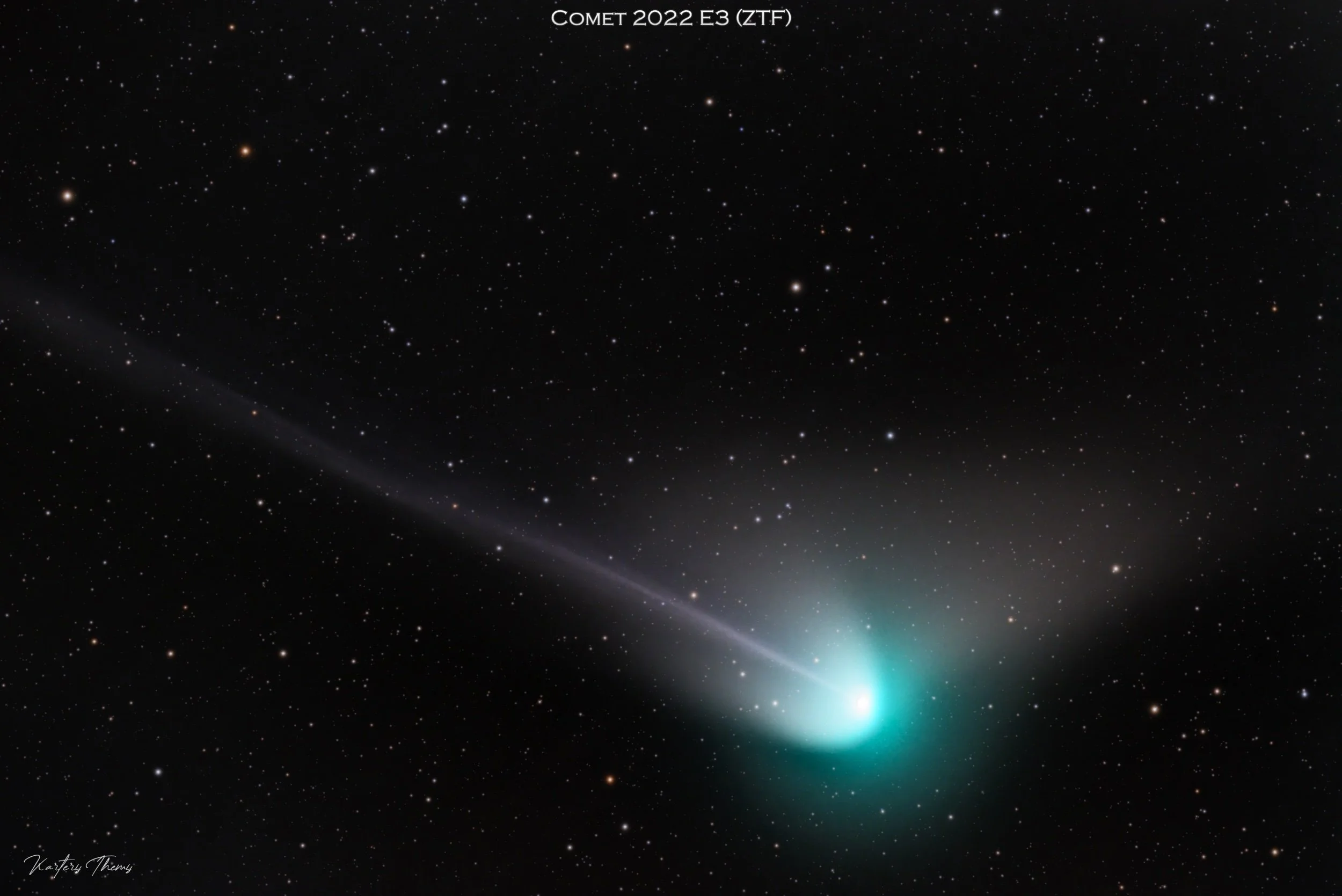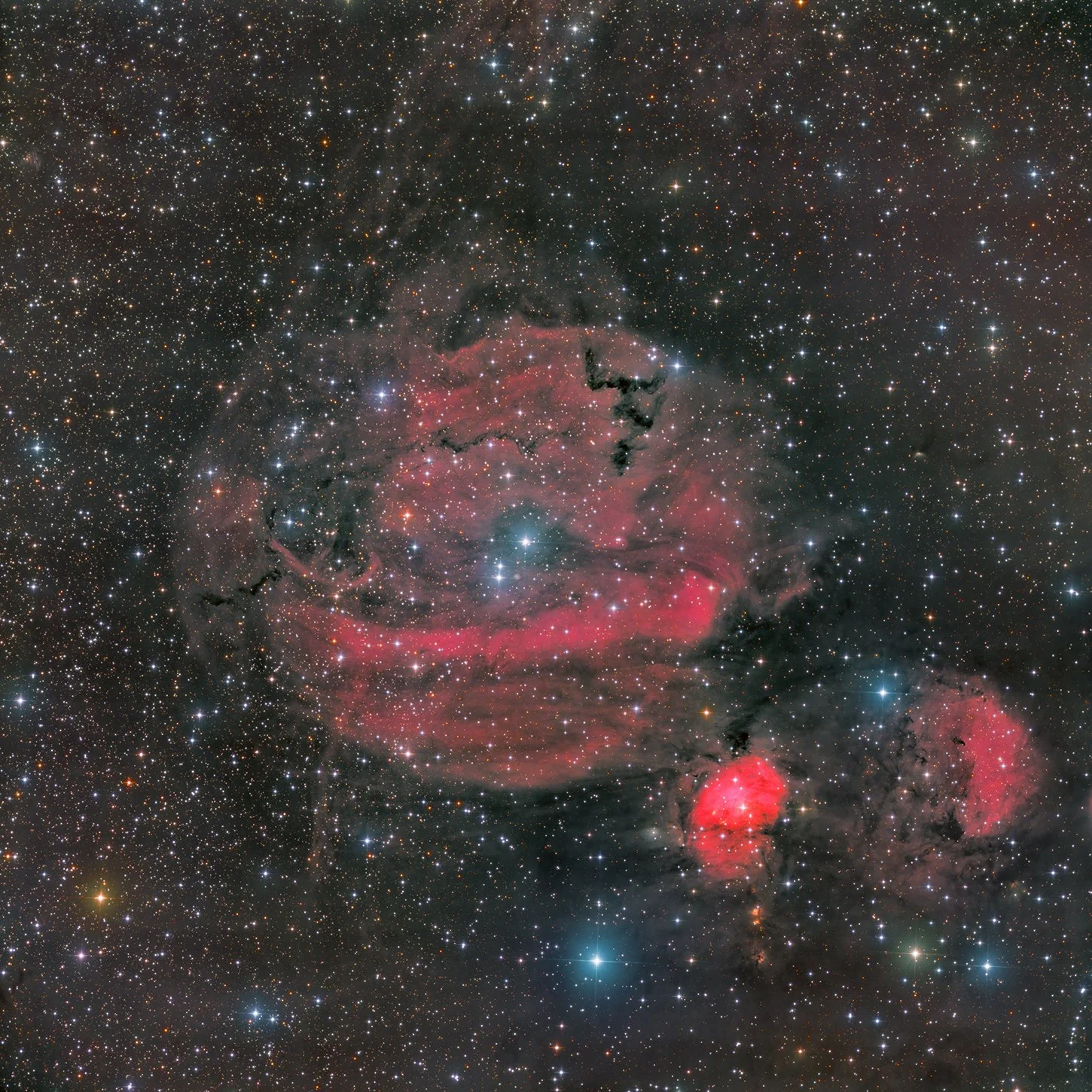
AAPOD2 Image Archives
Supernova remnant G107.5-5.2. — the Nereides nebula in Cassiopeia
In this celestial masterpiece, we peer into the aftermath of stellar cataclysms through the lens of the cosmos. Supernova remnants, such as the captivating G107.5-5.2, bear witness to the explosive demise of massive stars, unleashing unimaginable energies that ripple through the fabric of space. These remnants, like ghostly echoes of celestial fireworks, exhibit intricate structures of ionized gas and dust, adorned with vibrant hues that tell the tale of elemental creation. Each remnant is a cosmic crucible, where the remnants of an exploded star mix and mingle, seeding the cosmos with the building blocks of new generations of celestial bodies. As we explore the remnants of these stellar explosions, we unravel the dynamic forces that shape our galactic landscape and gain a profound glimpse into the majestic cycles of stellar life and death.
Large Magellanic Cloud - RGB_Ha
In this captivating snapshot of the Large Magellanic Cloud (LMC), one of our Milky Way's neighboring galaxies, we're offered an amateur astronomer's perspective on the cosmic tapestry. The image, featuring a blend of red, green, blue, and hydrogen-alpha filters, unveils the intricate dance of stars and gas clouds within the LMC. Vibrant hues highlight the stellar life cycle, with older stars and dusty regions appearing in reds, and younger, hotter stars in blues and greens. This image provides a unique view of the LMC's celestial wonders, inviting us to appreciate the beauty of our galactic neighbor through the lens of dedicated stargazers.
From Triangulum to Andromeda
This captivating deep-space image spans a vast cosmic expanse from the Andromeda Galaxy (M31) to the smaller yet equally enchanting Triangulum Galaxy (M33). This astronomical composition is a mesmerizing blend of multi-spectrum imagery, seamlessly harmonizing hydrogen-alpha (Ha) and doubly ionized oxygen (OIII) emissions with luminance (L), red (R), green (G), and blue (B) channels. In this breathtaking capture, the fiery tendrils of Ha and the ethereal glow of OIII emissions intertwine with the intricate details of stars and dust, creating a celestial astro-photo that not only reveals the grandeur of these neighboring galaxies but also provides a glimpse into the intricate astrophysical processes shaping the universe.
New Noise in Subaru (m45: aka Pleiades)
M45, commonly known as the Pleiades or the Seven Sisters, is one of the most enchanting open star clusters in the night sky, located in the constellation Taurus. This celestial jewel, situated about 440 light-years away from Earth, is a captivating sight that has fascinated stargazers and storytellers for centuries. In this mesmerizing image, the delicate, blue-hot stars of the Pleiades cluster shine brightly against a backdrop of cosmic dust and gas, creating a celestial spectacle that never fails to inspire awe. The Pleiades have been celebrated in cultures around the world, and their presence in the night sky serves as a timeless reminder of the beauty and wonder that the universe has to offer.
Unveiling hidden features in M51 using 255hours
In a mesmerizing display of cosmic interaction, the Whirlpool Galaxy, also known as M51, unveiled its spiraling arms and intricate features in a stunning astronomical photo that resulted from a 255-Hour Collaboration! This captivating galaxy, located in the constellation Canes Venatici, stood as a prime example of a grand design spiral, with its graceful arms adorned by bright knots of star formation. The exquisite interaction between M51 and its smaller companion galaxy, NGC 5195, was showcased in this image, demonstrating the profound influence of gravitational forces in shaping the evolution of galaxies. The intricate details of M51's structure offered a window into the marvels of galactic dynamics, inviting us to contemplate the vast and ever-evolving tapestry of the universe.
Night Flight Reflection Nebula 5367
Image Description and Details : This beautiful reflection nebula NGC 5367 is associated with the cometary globule CG12 in Centaurus, about 2500 light years away and is lit up by double star H4636.
Taken from my back yard , LRGB image 21 hours integration time.
William Optics Fluorostar 132 , ZWO ASI2600MM , 10-Micron GM2000 HPSII combi mount. Processed in Astropixel Processor and Pixinsight.
Copyright: Michelle Bennett
Cosmic monster CG4 and surrounding
Image Description and Details : CG4 means “Cometary Globule #4” and is a complex of nebulosity and dust with a very peculiar shape (it looks like a concentrate of comets) located in the southern constellation of Poppa. The “head” of the galactic worm has dimensions of about 1.5 light years, while the offshoot that follows the head and which is directed in the opposite direction with respect to the rest of the famous Vela supernova (which is at the center of the huge GUM nebula), it has a length of about 8 light years.
The complex was photographed during ShaRA#4 project; this is a composition of 3 different images in wide field taken with the T3 from Chilescope Service (a very fast 500m f/3.8 Newtonian), processed by Christian Privitera, Andrea Iorio and me (Alessandro Ravagnin). RGB composition, total 2 hours of integration.
Copyright: ShaRA Team
M101 supernova
Cropped image of M101 image of last night, with bright supernova 2023ixf (discovered in Japan on May 19th). The supernova is indicated between two line segments. The sky was not really good, with high thin clouds present during the 2 hour exposure with Takahashi Epsilon 160ED.
Copyright: Dominique Dierick
Omega Centauri
Image Description and Details : Taken with my 36.8 cm F9 Ritchey Chretien and STXL6303 CCD camera from my backyard observatory in Canberra Australia. This is a standard LRGB image with luminance = red = green = blue = 50 minutes. Processing in MaximDL, Pixinsight and Adobe photoshop CC
Copyright: Steve Crouch
Dying Fast & Slow (Sharpless 216, 221 Region)
Image Description and Details : This is a region of space in Auriga showing a large and faint Supernova Remnant (Sh2-221) next an equally large and faint Planetary Nebula (Sh2-216). The latter is also often called the "Second Closest Planetary Nebula." The former may be an example of the earliest recorded supernova (~6600 years ago) as a cave drawing depicting this area of sky was found with a possible illustration of a bright light in the same area of sky, though this interpretation is not conclusive.
Altogether this field of view covers over a dozen times the apparent width of the Full Moon in our sky and was captured with a total of 44.5 hours across 9 nights of imaging (9 hours RGB, 36.5 hours evenly split between Hydrogen and Oxygen filters).
71mm F/4.9 Petzval Refractor, ZWO ASI6200MM-P, Antlia RGB & 3nm Ha/Oiii filters. Captured with APT and processed in PixInsight
Copyright: Brent Newton Photography
C/2022 e3 ztf
Image Description and Details : First try with the new Pegasus Astro NYX-101 mount and my first astrophotography on a comet.
Imaging Telescope: Sky-Watcher Esprit 100ED
Imaging Cameras: QHYCCD QHY268 Pro M
Mounts: Pegasus Astro NYX-101
Filters: Baader Blue (B-CCD) 36 mm · Baader Green (G-CCD) 36 mm · Baader Red (R-CCD) 36 mm · Baader UV/IR Cut / Luminance 36 mm
Accessories: Intel NUC 10 · Pegasus Astro FlatMaster 150 · Pegasus Astro FocusCube2 · Pegasus Astro Ultimate Powerbox 2 · QHYCCD PoleMaster · QHYCCD QHYCFW3-M-US · QHYCCD QHYOAG-M
Software: Adobe Photoshop · Open PHD Guiding Project PHD2 · Pleiades Astrophoto PixInsight · Stefan Berg Nighttime Imaging 'N' Astronomy (N.I.N.A. / NINA)
Bortle:4
Exposures: All fits 60sec-Lum~27min Red~25min Green~25min Blue 25min.
Calibration Frames: Flats 10 - Darks 15 - Dark Flats 10
Copyright: Karteris Themis
sh2-232
Image Description and Details : Sh2-232 (centre) and Sh2-235 (lower left) are large, faint regions of Ha-nebulosity in the constellation Auriga. But they aren’t the only objects in the image. The small oval structure just left of centre of Sh2-232 is a planetary nebula, PN G173.5+03.2. Another faint planetary appears as a small yellowish haze around a star just above Sh2-235.
Astrosib RC 20" F2.7 +camera FLI Kepler 4040 cmos
Total Hargb=19h05
ccdautopilot+the skyX + Pixinsight + Photoshop
From Fregenal de la sierra(Spain) in remote
Copyright: Georges Chassaigne



